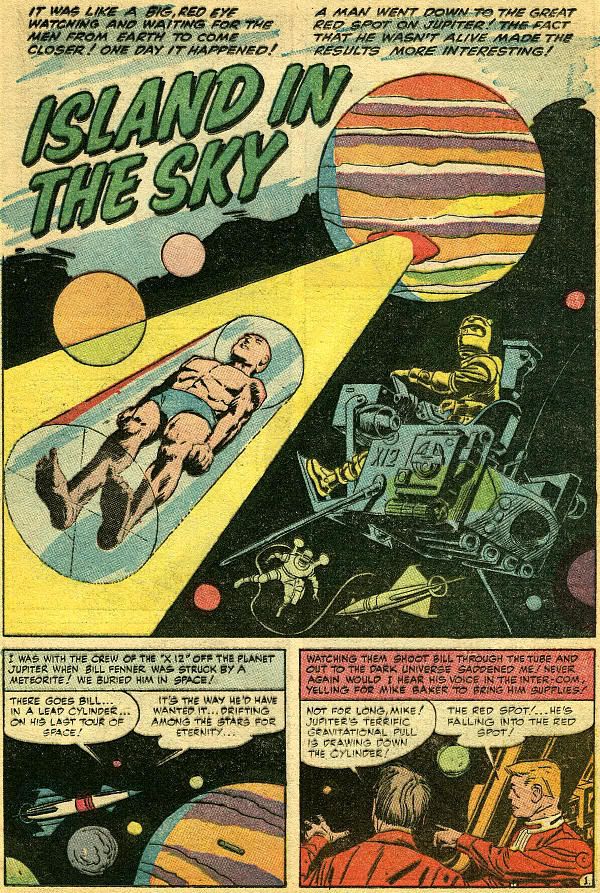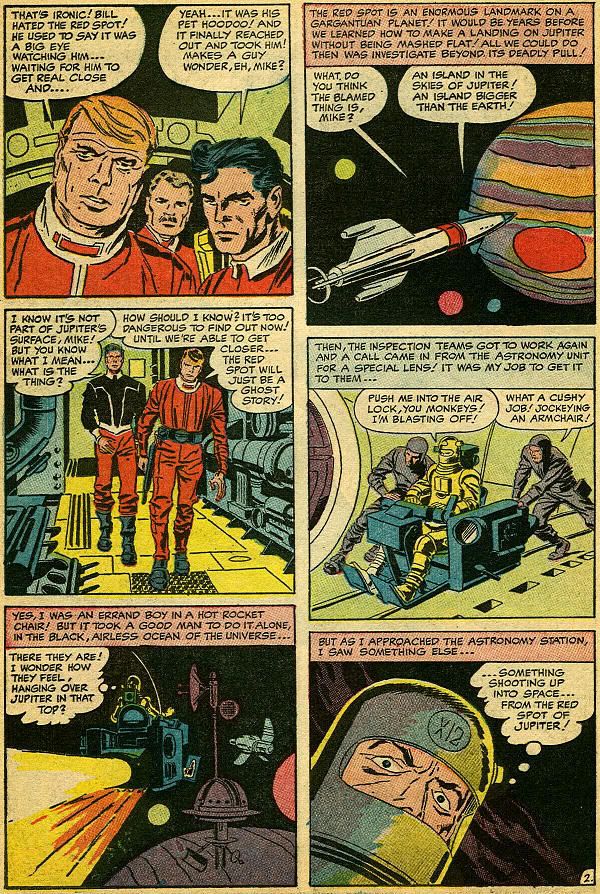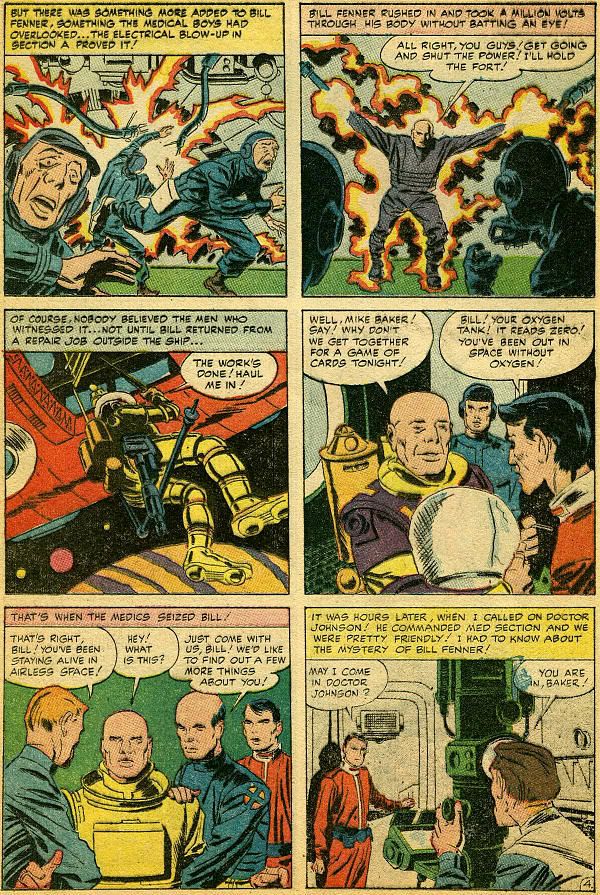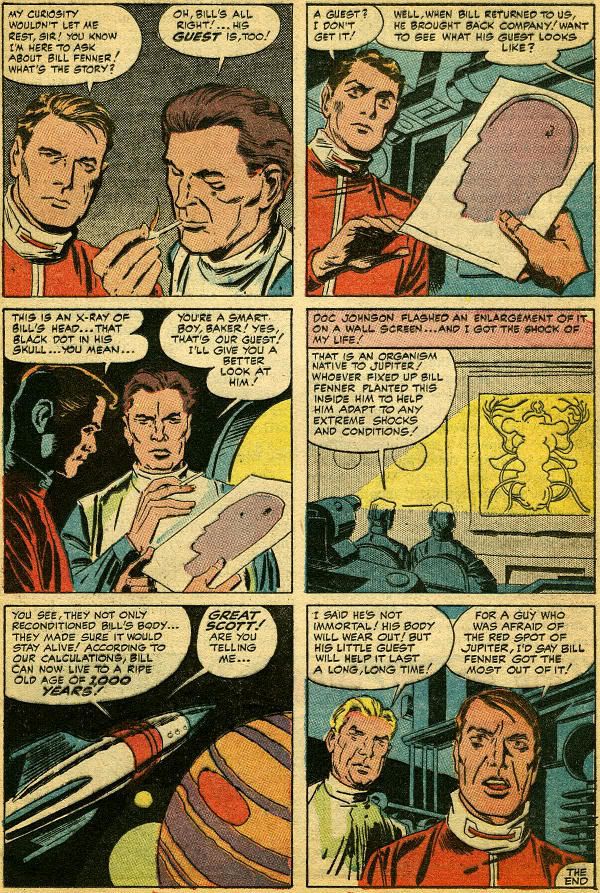Home » Archives for tháng 3 2008
Người đăng:
Unknown on Thứ Hai, 31 tháng 3, 2008
 Number 282
Number 282
Burke and Hare
"To burke" is to kill by smothering or suffocation. The verb comes from this pair of miscreants, Burke and Hare, immoralized…heh-heh, I mean immortalized, in "Ghoul's Gold" from 1946 in Crime Does Not Pay #43. It's written by Robert Bernstein, who later worked for EC, writing the entire run of the title Psychoanalysis. He was an all-purpose guy. A couple of years later he did Aquaman stories for DC.
Jack Alderman was the artist of "Ghoul's Gold." Jack had a very heavy-handed style. I don't think I've ever seen anything drawn by him in any but Lev Gleason's crime comics. His figures are stiff--get it? stiff?--and his inking is heavy and dark. In other words, just about perfect for this little tale of a couple of infamous murderers…

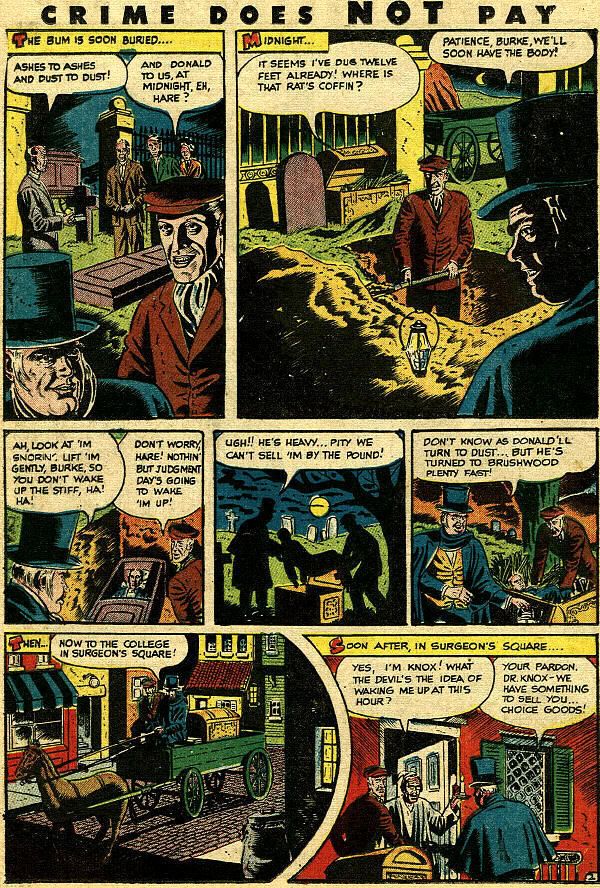
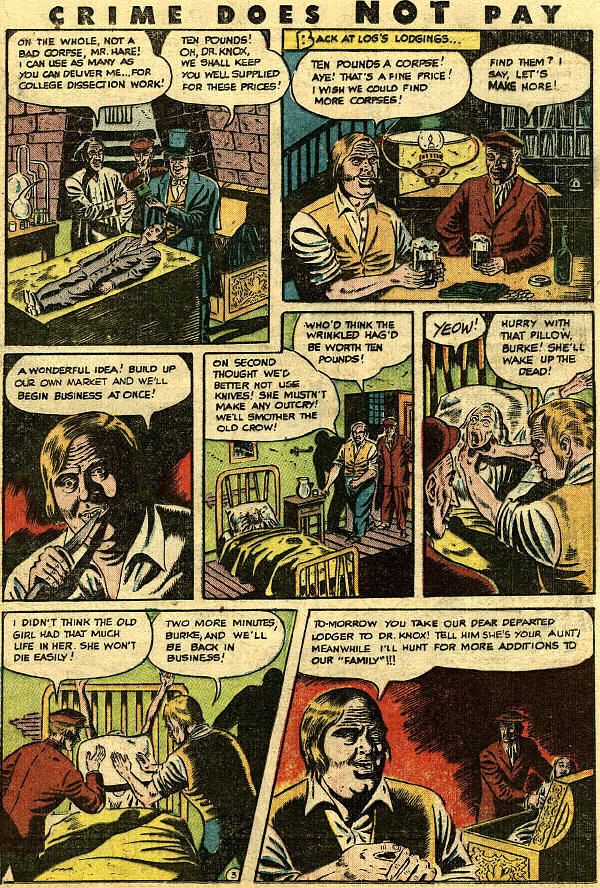

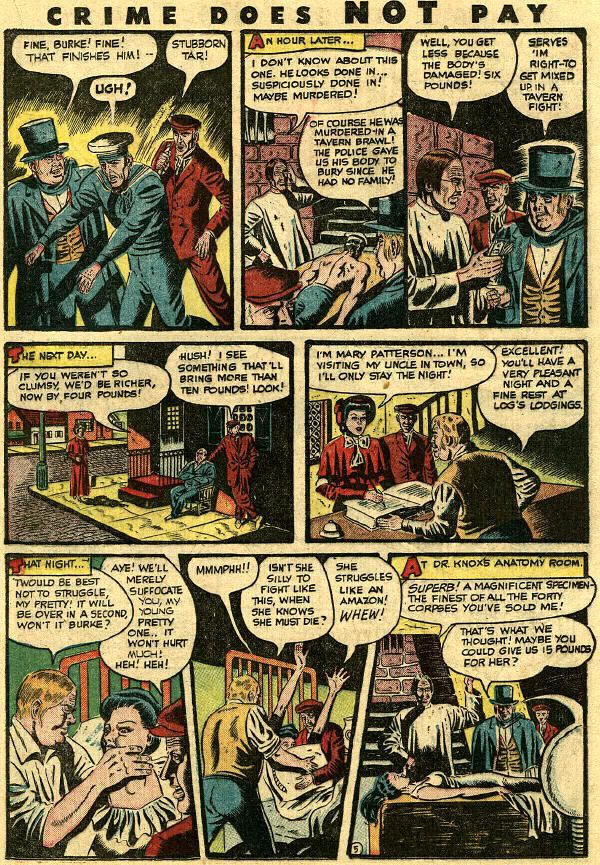
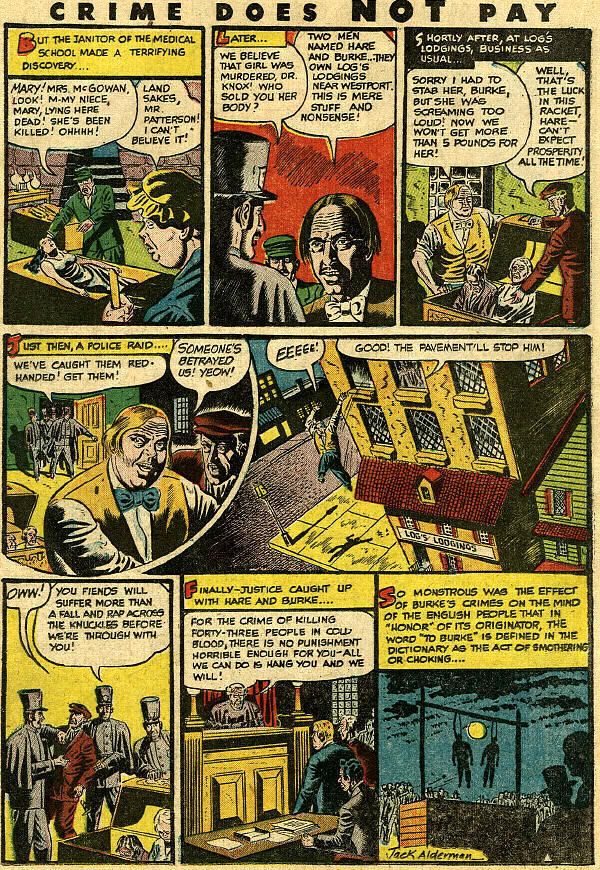
Người đăng:
Unknown on Thứ Sáu, 28 tháng 3, 2008
 Number 281
Number 281
The Starving Ghoul
This is a screwball story from Eerie Publications' Terror Tales #7, March 1969. The title, "Gravestone for Gratis" has nothing to do with the story. Neither does the splash. They look like they've been stuck on from a different story. Other than that it's pretty typical of an early '50s horror comic from which it was reprinted. I don't have the information on its original appearance.
The writer could have let us know early in the story the main character had a medical problem so the plot device at the end wouldn't be so jarring. And speaking of "jarring," the cover is a gruesome Eerie Publications classic.

Page 1 / Page 2 / Page 3 / Page 4 / Page 5 / Page 6 / Page 7
Người đăng:
Unknown on Thứ Tư, 26 tháng 3, 2008
 Number 280
Number 280
Sexy John Stanley
Besides strips about little kids, Little Lulu and Nancy, in the early '60s John Stanley did some teenage books, including Around The Block with Dunc & Loo and Thirteen Going On Eighteen.
This is an example from Dunc & Loo #2, Jan.-Mar. 1962. Stanley pokes some sly fun at teenage hormones with a story about Dunc's plot to take some sexy pictures of his girl, Beth, with a typically hilarious Stanley outcome. While the layouts and script are by Stanley, the Overstreet Comic Book Price Guide credits the art to Bill Williams.
As a teenager in 1962 I had a problem with Dunc & Loo. Even in that distant and long ago year teenagers didn't dress like Stanley's teenagers. They had a style more from the 1940s than the 1960s. Dunc has a bowtie, which would have had him laughed out of my high school, and the hat Loo is wearing is strictly, well, old hat!

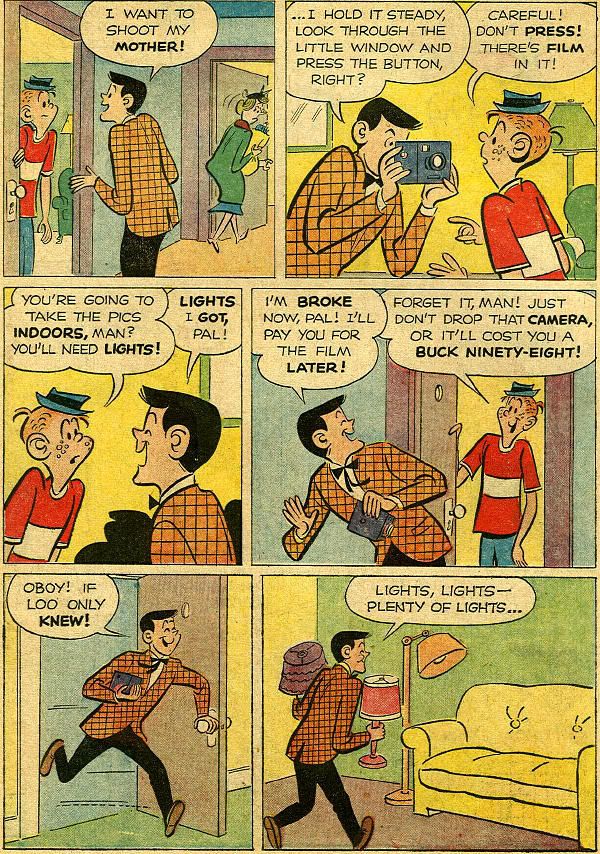

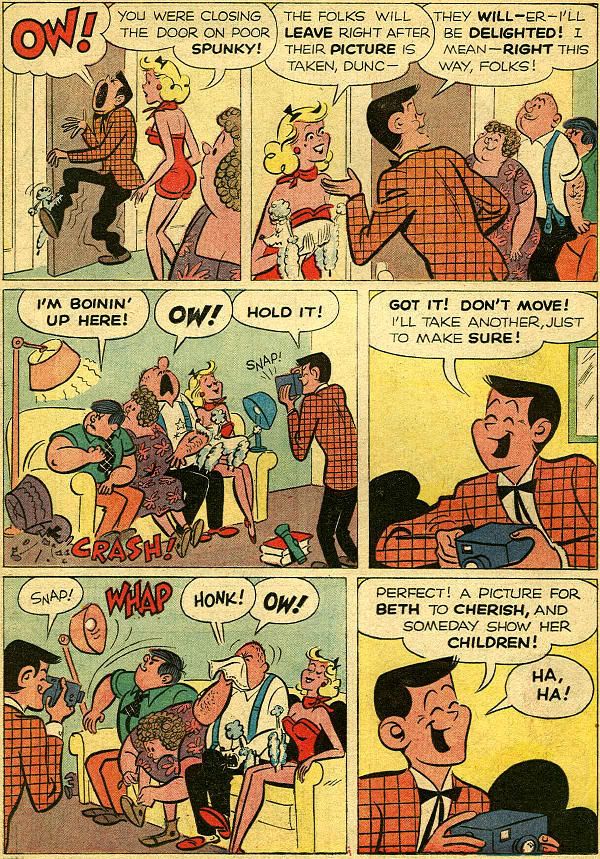
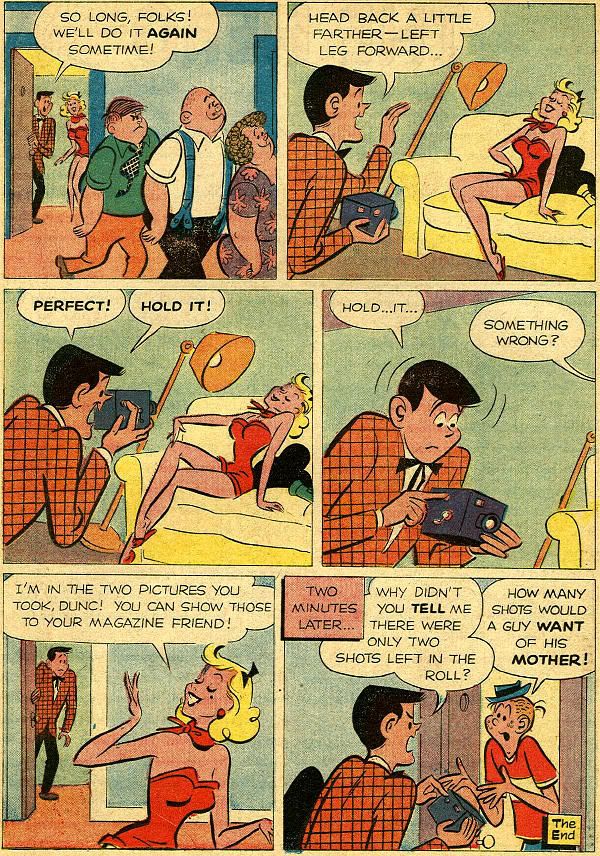
Người đăng:
Unknown on Thứ Hai, 24 tháng 3, 2008
 Number 279
Number 279
The Twisted Mr. Twisto
There's no secret to Charles Biro's approach to comic book writing. Focus on the bad guys. Villains are intrinsically more interesting that goody two-shoes good guys. The last time I showed classic Biro was a Daredevil story in Pappy's #229.
Biro's best covers are classics of pulpish sleaze. The cover to MLJ Comics' Zip Comics #9, November 1940, from which this Steel Sterling story is scanned, is a good example. Headless men, their brains in see-thru tubes, are having a punch-up with Steel. There's no story like that, but as a cover it's worth a lot of sales.

As for Mr. Twisto, the bad guy from this circus-based story, he's a villain firmly in the Biro tradition.
Page 1 / Page 2 / Page 3 / Page 4 / Page 5 / Page 6 / Page 7 / Page 8 / Page 9 / Page 10 / Page 11 / Page 12 / Page 13 / Page 14
*******

Harry Shorten was involved with MLJ Comics from its earliest days. He worked on Archie and other features. He is probably best known to a later generation of comics fans for publishing Tower Comics and T.H.U.N.D.E.R. Agents. He even published the infamous Midwood Books. With Al Fagaly, also an MLJ alumnus, he created the There Oughta Be A Law! newspaper comic strip, which ran from 1944 to 1984. Like Jimmy Hatlo's They'll Do It Every Time, the strip that inspired Law, Shorten's strip was a combination of irony and funny names. In these examples check out "Cringely," "Glandula," "Polyp," etc. These strips come from a 1969 Belmont Books collection.




Người đăng:
Unknown on Chủ Nhật, 23 tháng 3, 2008
Number 278
Diyos Ko!
Here's a story from Redondo Komix Magasin #159, from 1967, published in the Philippines. I don't know Tagalog, the language, but it's easy enough to follow. It's told economically in only four pages, and is drawn by the late Vicente Catan Jr., known as Vicatan Jr, one of the top Filipino comic artists.
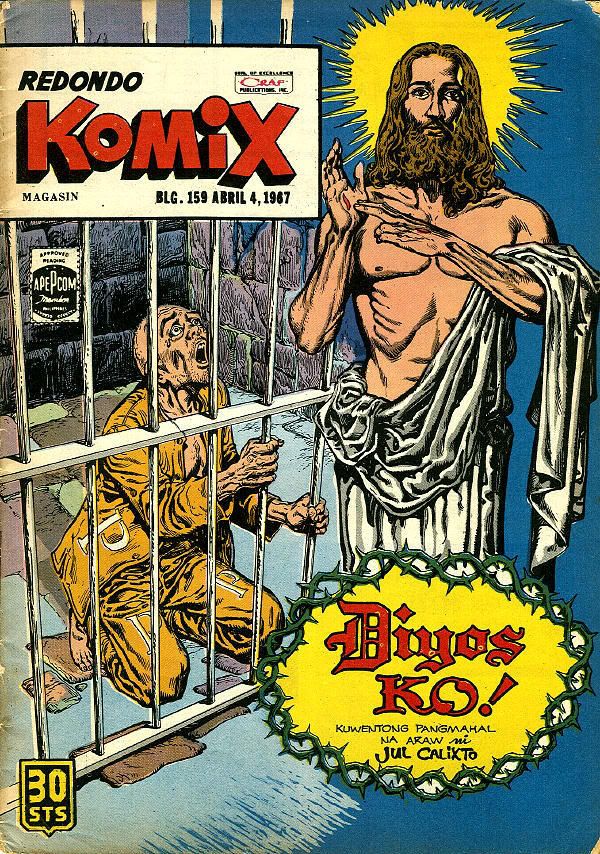
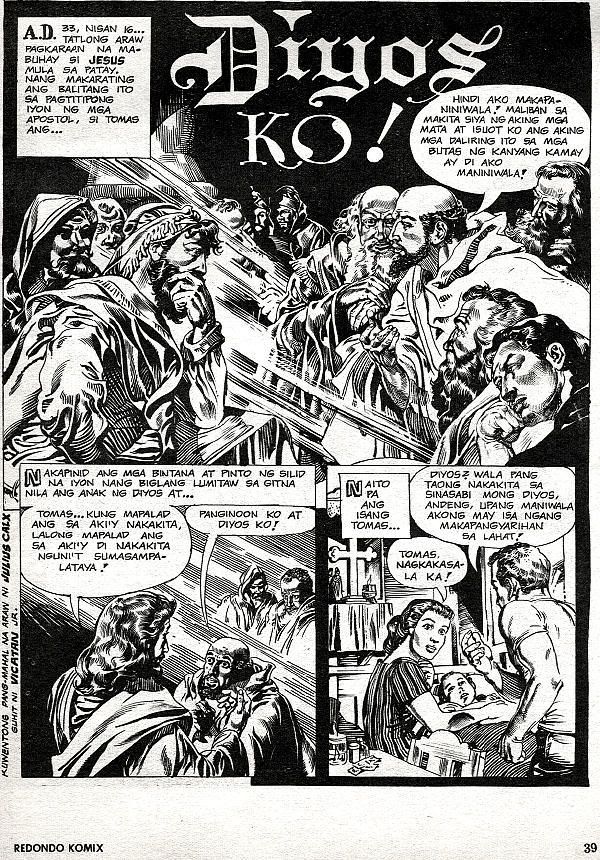

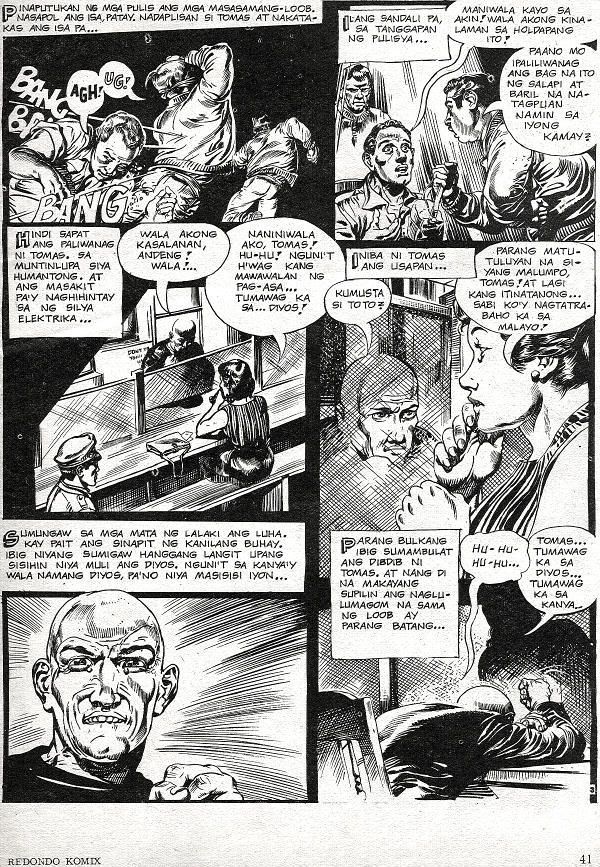
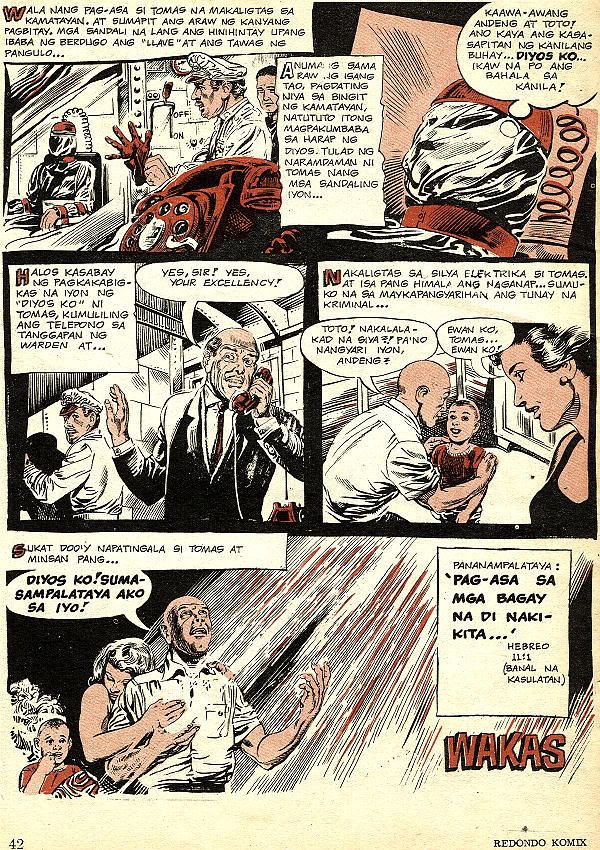
More about →
Người đăng:
Unknown on Thứ Sáu, 21 tháng 3, 2008
 Number 277
Number 277
The Spider Sorceress
Here's a little tale of arachnids and sorcery from the Fiction House comic book factory. "Werewolf Hunter" was an ongoing series, and this is a reprint published in Ghost Comics #3, from 1952 when that once robust company was breathing its last.
I get in trouble when I try to identify artists, but the Grand Comics Database has no information, so what if I say Lily Renée? The Comics Journal #279 has an article on Renée, with examples of her art from other episodes of Werewolf Hunter.
There are two Werewolf Hunter stories in this issue of Ghost. This one is credited to Armand Weygand, the other is bylined Armand Broussard. It looks like Fiction House couldn't even keep its pen-names straight. Unless--unlikely as it seems--two guys named Armand actually wrote the stories.
Nawwwwwww….
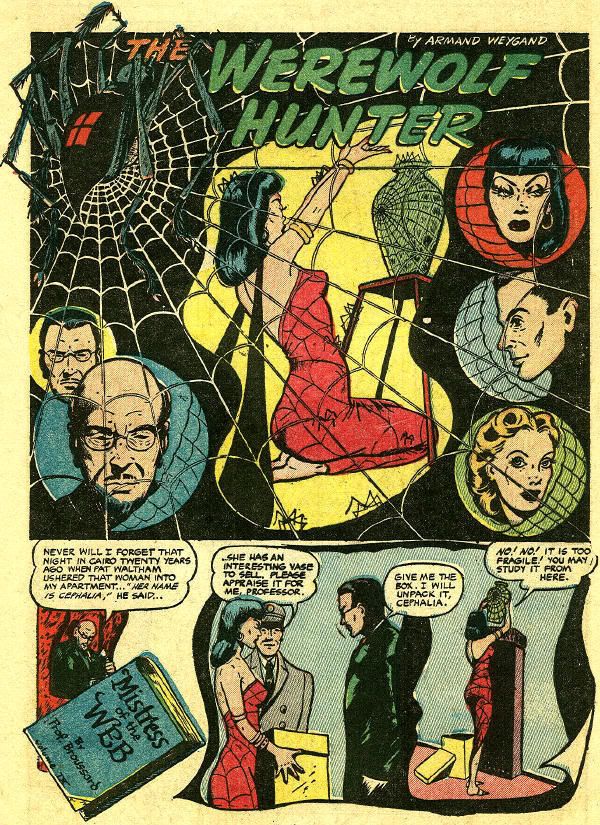
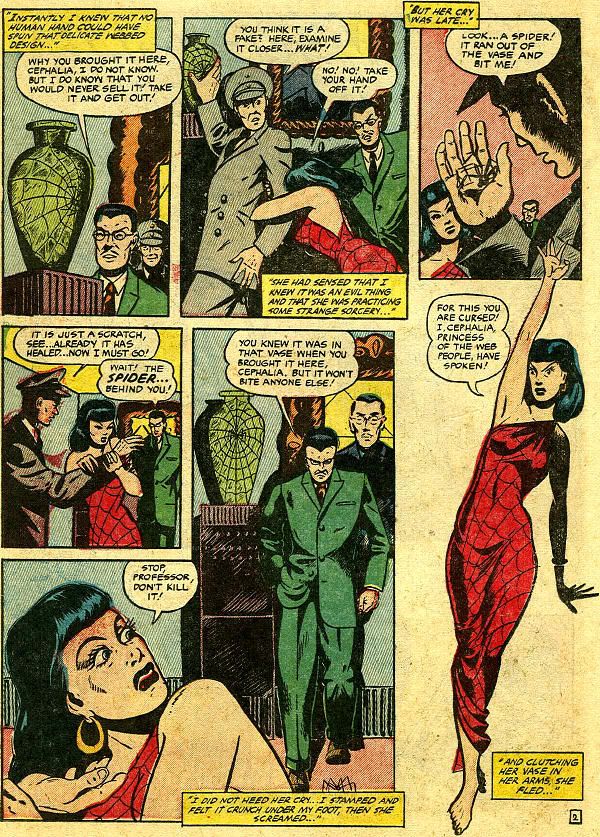
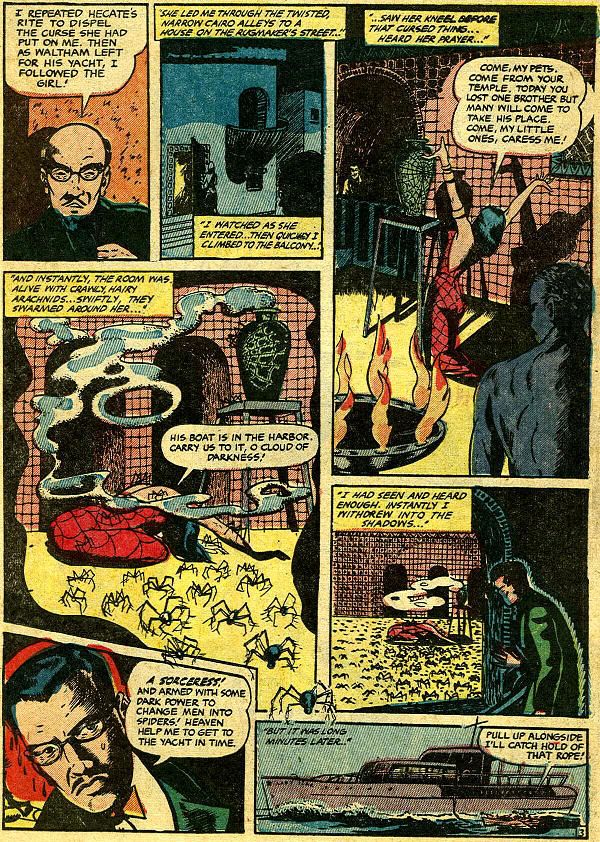
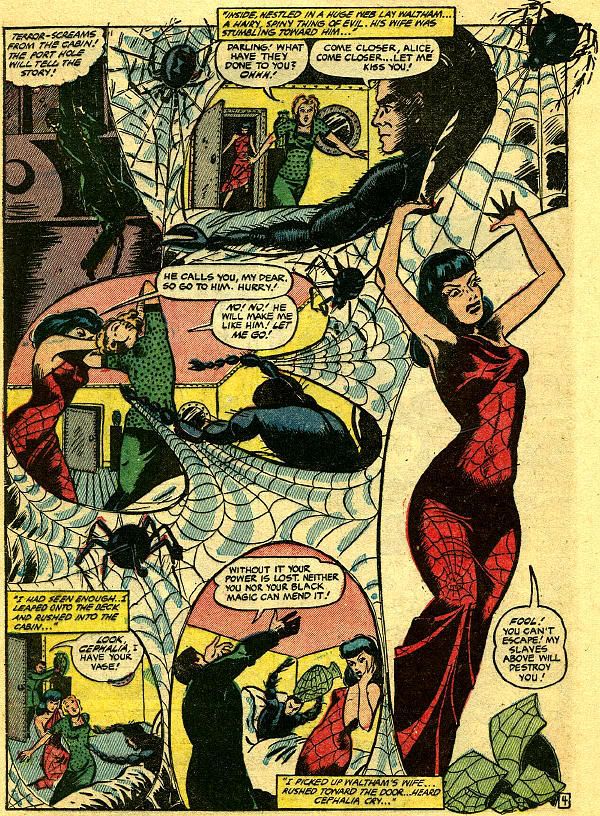
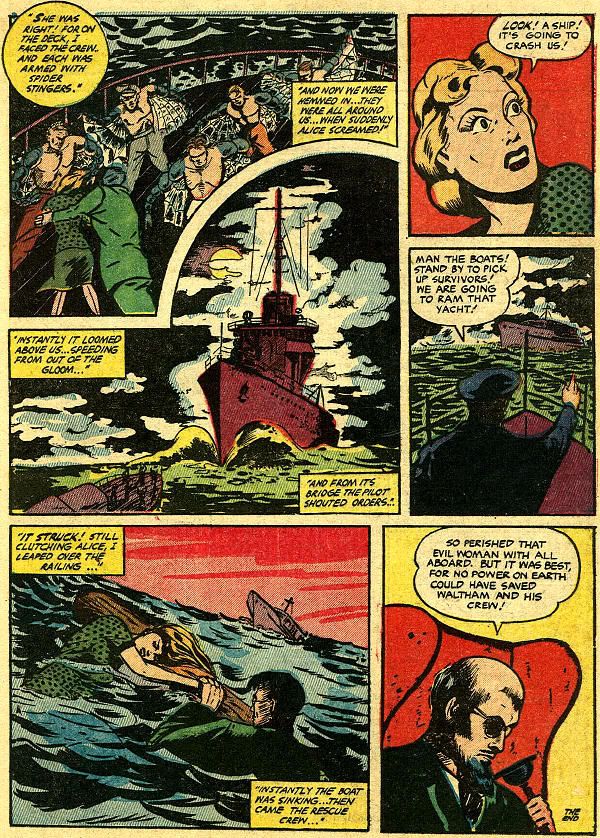
Người đăng:
Unknown on Thứ Tư, 19 tháng 3, 2008
 Number 276
Number 276
At Midnight all cats are gray…
Midnight, a Spirit lookalike, was drawn by artist Paul Gustavson. This particular story was published in Quality's Smash Comics #46, September 1943.
As much as I admire Gustavson's style, I wonder where the editor was when he turned in his artwork. He should've handed him a book on animals and said, "This is a cat. Draw it like this." I think cats in Warner Bros cartoons look more realistic than Gustavson's.
The cover, with a cat that looks like a cat, is by Alex Kotzky, who later went on to draw the successful syndicated comic strip, Apartment 3-G.

Page 1 / Page 2 / Page 3 / Page 4 / Page 5 / Page 6 / Page 7 / Page 8 / Page 9 / Page 10 / Page 11
Người đăng:
Unknown on Thứ Hai, 17 tháng 3, 2008
 Number 275
Number 275
Don't shake the family tree
This short-short story from Atlas Comics' Uncanny Tales #7, published in 1953, is by Larry Woromay, an artist who went from comics into fine art. He died last year. These are a couple of paintings from his web site:


The story, "The Witch of Landor," is scanned from a reprint in Marvel Comics' Chamber of Chills #15, from 1975. Karswell ran a story here, done in an imitation Jack Davis style, which one of the comments identified as being by Woromay. Could be. I haven't seen enough of Woromay's work to know, but it's a great Jack Davis rip-off, whoever did it.
Based on "Witch of Landor," which is full of moody panels and artwork, I'd like to see more by Woromay in his own style.
"Landor" teaches one thing, and that is be careful when shaking your family tree. You just never know what will fall out of the branches.
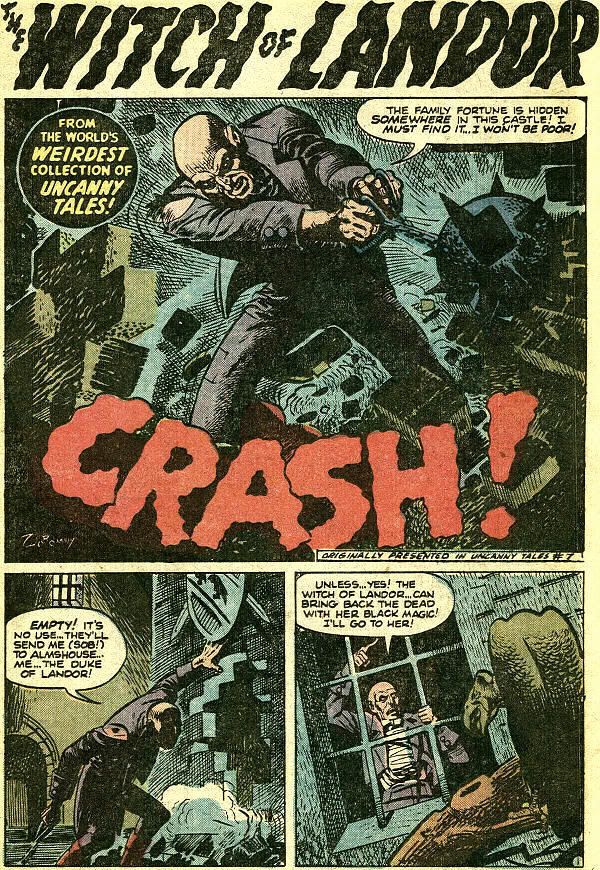
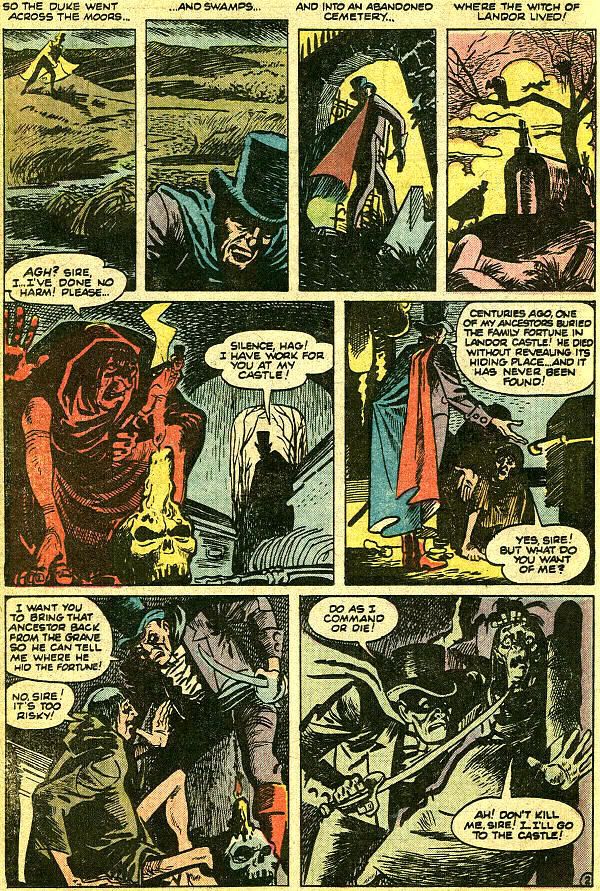
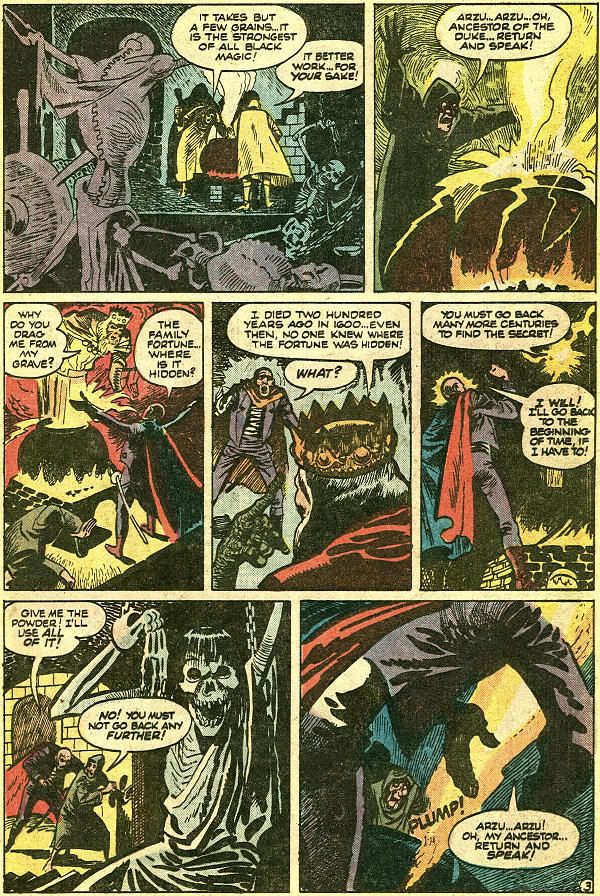

*******
HAPPY ST PAT'S DAY!
Here's my contribution to this day, a Lucky Charms ad from 1964, scanned from Sad Sack #157, from 1964. Baby Boomers will remember the Leprechaun and Lucky Charms commercials from television in the early 1960s. The artwork is by Bill Williams. I have a story written by John Stanley and drawn by Bill Williams coming up very soon.
In the meantime, hoist a green ale for Pappy.

Người đăng:
Unknown on Thứ Sáu, 14 tháng 3, 2008
 Number 274
Number 274
Walt Kelly's Cave Kid
"Kandi The Cave Kid" is by Walt Kelly, and is a good example of his early comic book work. It appeared in Looney Tunes and Merrie Melodies Comics #5, from 1942. The racial characterizations are crude and unfortunate but the strip is a product of its times.
Kelly's artwork showed up a lot in the 1940s Dell Comics. In my opinion his best work was done for Fairy Tale Parade and Animal Comics. He worked fast. As always his animal characters, in this case the lion, are great.
Page 1 / Page 2 / Page 3 / Page 4 / Page 5 / Page 6 / Page 7 / Page 8

Thanks to Karswell of The Horrors Of It All for the E for Excellent!
Người đăng:
Unknown on Thứ Tư, 12 tháng 3, 2008
 Number 273
Number 273
Kirby's big red eye!
Here's the third of four stories from Harvey Comics' Race For The Moon #2, from 1958. It illustrates the scene from the cover, shown in Pappy's #255.
A dead man goes into the Big Red Spot of Jupiter, and is returned alive. An intriguing premise, maybe too much for just five pages, but the power of Jack Kirby's artwork, this time inked by Al Williamson, never fails to amaze.
